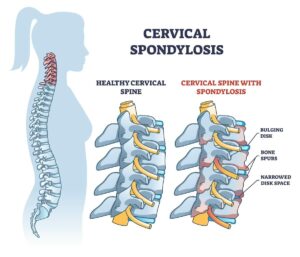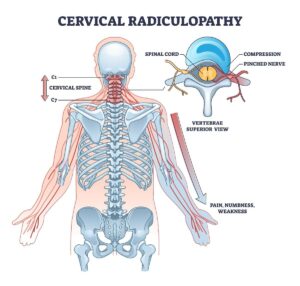Free download: Top 10 Natural & Easy Remedies for Joint Pain from Home. Learn these helpful remedies.
Estimated Reading Time: 6 minutes read
In the digital era, where screens dominate our lives, neck pain from computer use has become a common complaint. Whether you’re clocking in hours at work or scrolling through social media, the strain on your neck is inevitable. This article will guide you through easy-to-follow stretches and tips to alleviate that pesky neck pain. Let’s dive into a comfortable and pain-free digital experience.
Table of Contents
Causes of Neck Pain from Computer Use
Before we tackle the solution, understanding the root cause is crucial. Here are the main culprits behind neck pain related to computer use:
- Poor Posture: Slouching or leaning forward disrupts the natural alignment of your neck and spine.
- Prolonged Screen Time: Hours in front of a screen without breaks strains the neck muscles.
- Incorrect Screen Height: A screen not at eye level causes you to bend your neck unnaturally.
- Inadequate Chair Support: Lack of proper back support encourages poor posture.
- Limited Movement: Staying in one position too long stiffens the neck muscles.
- Stress: Emotional stress can cause you to tense your neck muscles unconsciously.
Each of these factors contributes to the strain on your neck, leading to discomfort and, over time, chronic pain if not addressed.
Symptoms to Watch Out For
Recognizing early signs of neck pain can help prevent more serious issues. Keep an eye out for:
- Stiffness in the Neck: Difficulty in moving your neck normally.
- Sharp Pain: Especially in one spot, which may indicate a muscle strain.
- General Soreness: A dull, aching pain around the neck area.
- Headaches: Often originating from the base of the skull.
- Numbness or Tingling: In your arms, indicating nerve irritation.
- Fatigue: Neck muscles feeling tired and weak.
If you’re experiencing any of these symptoms frequently, it’s time to take action and make some changes to your routine.
Stretch Your Way to Relief
Before we list the exercises, it’s crucial to understand the importance of incorporating stretching into your daily routine. Stretching not only alleviates existing pain but also prevents future discomfort. It’s a proactive approach to maintaining neck health, enhancing flexibility, and reducing tension.
1. Levator Scapulae Stretch
- Begin by sitting upright in a chair.
- Depending on the side of pain, place that hand on the seat. For instance, if your right side aches, use the right hand.
- With your opposite hand, gently grasp the side of your head.
- Apply a gentle pressure to guide your gaze toward the opposite armpit.
- Hold for 30 seconds and repeat three times.

2. Pec Stretch

- Standing in front of your doorway, raise your arms up to shoulder height like a goalpost. The elbows will be bent with the palms facing forward.
- Keeping this position, rest the arms against your doorway.
- Slowly lean forward into a gentle stretch and hold for at least 30 seconds.
- Repeat this stretch for a total of 3 times.
3. Back Extension with a Chair


- Starting position: Using a chair with a back, place your hands behind your head to cradle it and your back positioned against the chair back.
- Slowly lean back, extending your back while looking up towards the ceiling. Make sure not to lean to far back so you don’t tip the chair!
- Hold the stretch for up to 5 seconds, then return to your starting position.
- Repeat for 10 repetitions and 3 sets in total.
These stretches target the muscles most affected by computer use, offering relief and promoting healthier posture.
Strengthening for Long-Term Benefits
Strengthening exercises build resilience in your neck muscles, supporting a correct posture effortlessly. Include these in your routine:
1. Chin Tucks


- You can perform a chin tuck laying on your back or sitting or standing.
- Gently tuck the chin directly back as if trying to make a double chin. Avoid nodding your head.
- Hold this position for 2 seconds, then slowly relax your muscles.
- Repeat 10 repetitions.
2. Scapular Retraction
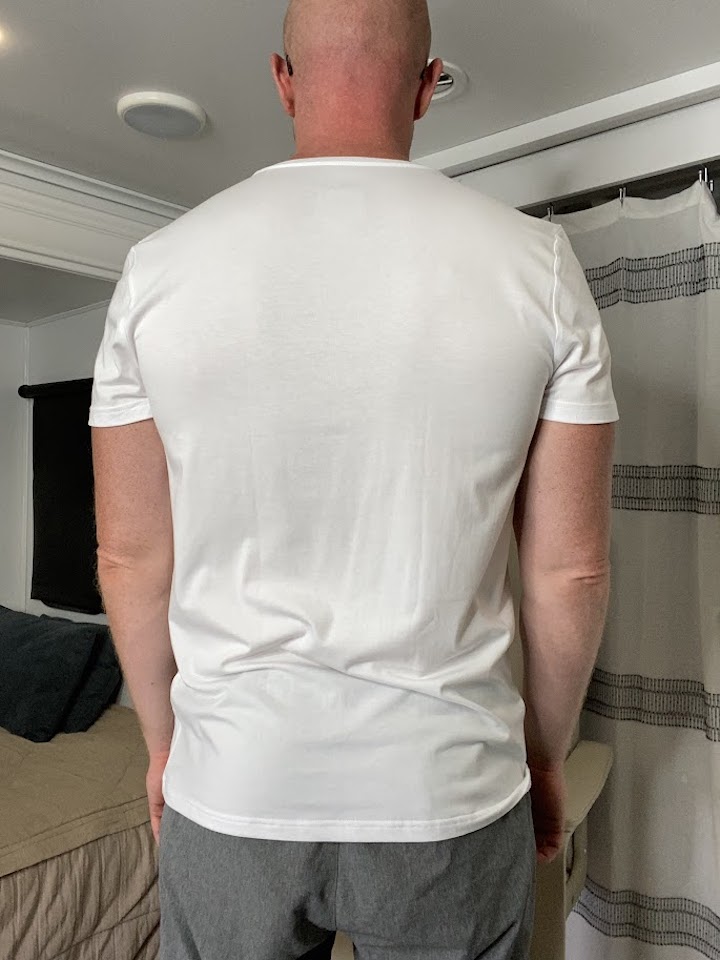

- In a sitting or standing position, try to sit as straight as possible. Aim to position the head in a neutral position as possible.
- Gently pull the shoulders back and squeeze the shoulder blades together.
- Hold for 5 seconds, then relax.
- Repeat 10 repetitions for 3 sets.
3. Rows with Resistance Band
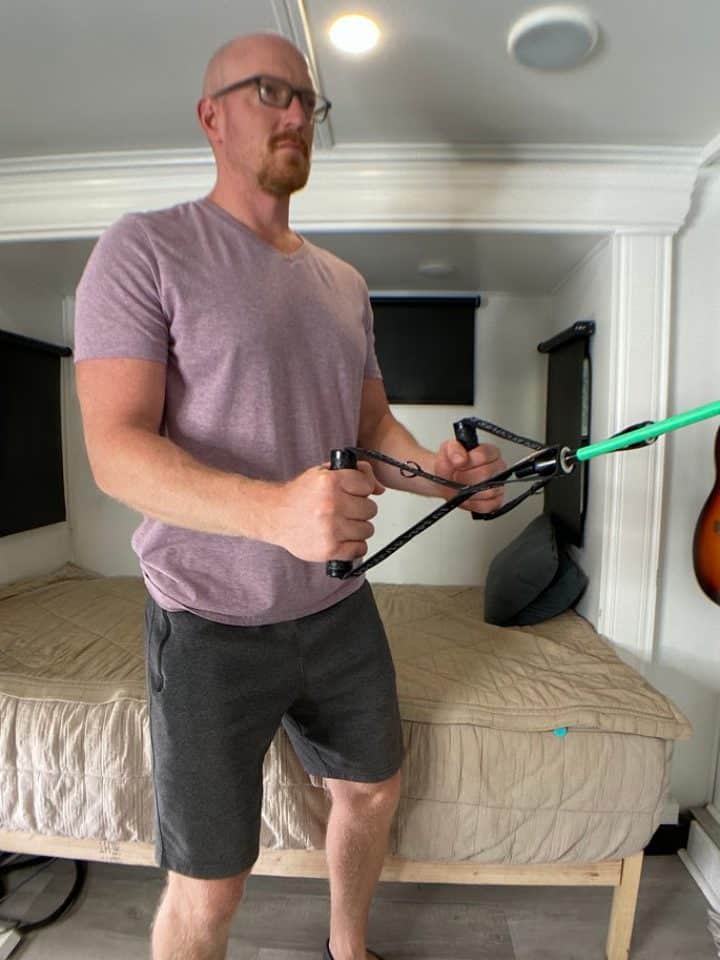
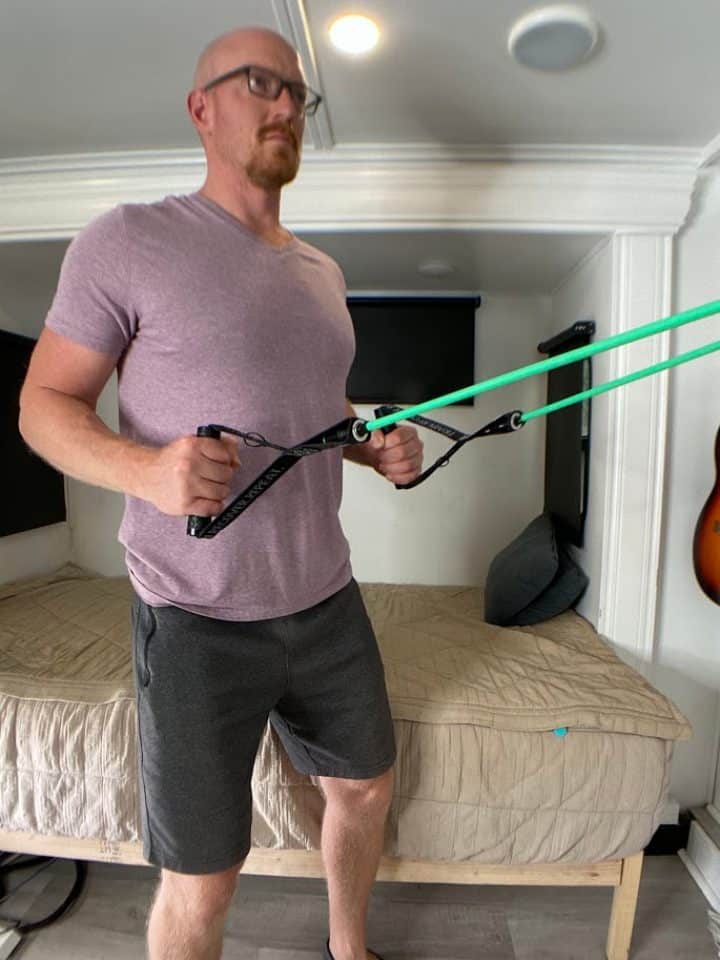
- Hold on to the ends of a resistance band (light, medium or heavy), which you can attach to a door knob.
- Begin with the arms elevated in front of you to shoulder height and the palms facing each other.
- Step back far enough that the resistance bend has a little tension.
- Pull back on the band by bending the elbows and swinging the arms back next to you. Make sure to squeeze the shoulder blades together.
- Hold for 2 seconds, then return to your starting position.
- Repeat 10 repetitions for 3 sets.
Strengthening these areas helps counterbalance the forward pull exerted by prolonged computer use, reducing the risk of pain.
Posture
A crucial aspect of preventing neck pain is maintaining proper posture. Ensure your ears are over your shoulders and shoulders over your hips. Here’s a quick posture checklist:
- Draw your shoulder blades down and back.
- Lift through your breastbone without arching your back.
- Adjust your screen to eye level to avoid bending your neck.
- Take frequent breaks to stretch and move around.
Adhering to these posture principles can significantly reduce the strain on your neck.
Care Tips for a Healthy Neck
Beyond exercises and posture adjustment, here are additional tips to care for your neck:
- Ergonomic Workspace: Invest in an ergonomic chair and desk setup.
- Regular Breaks: Implement the 20-20-20 rule; every 20 minutes, look 20 feet away for at least 20 seconds.
- Hydration: Keep your muscles and discs hydrated by drinking plenty of water.
- Stress Management: Practice relaxation techniques to reduce muscle tension.
- Professional Guidance: Consult with a physical therapist for personalized advice and exercises.
Incorporating these practices into your daily life will enhance the effectiveness of the exercises and stretches recommended.
Conclusion
In the quest to conquer neck pain from computer use, remember consistency is key. Integrating the stretches and tips outlined into your daily routine can transform your experience with technology, making it pain-free and enjoyable.
Listen to your body, make adjustments as needed, and prioritize your physical well-being. After all, in a world increasingly dominated by screens, safeguarding your neck health is not just beneficial—it’s essential. Start today and embrace a more comfortable, productive digital life.









